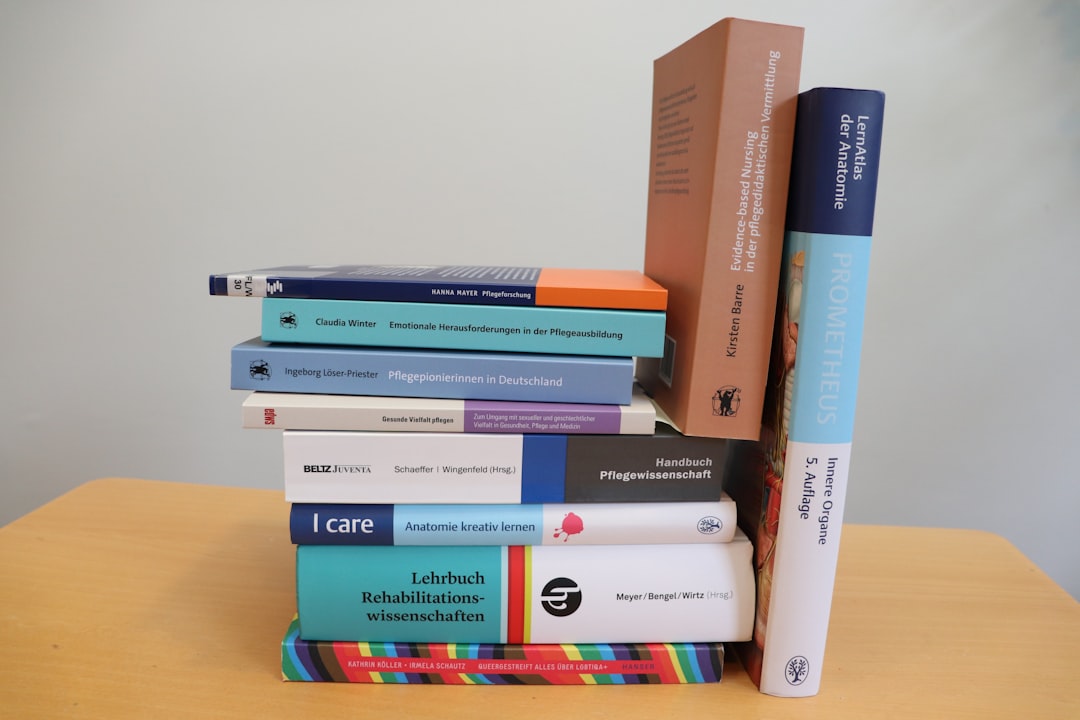
Supercharge your lead generation with a FREE Google Ads audit - no strings attached! See how you can generate more and higher quality leads
Get My Free Google Ads AuditFree consultation

No commitment
Supercharge your lead generation with a FREE LinkedIn Ads audit - no strings attached! See how you can generate more and higher quality leads
Get My Free Google Ads AuditFree consultation

No commitment
Supercharge your lead generation with a FREE Meta Ads audit - no strings attached! See how you can generate more and higher quality leads
Get My Free Google Ads AuditGet My Free LinkedIn Ads AuditGet My Free Meta Ads AuditFree consultation

No commitment
Supercharge your lead generation with a FREE Google Ads audit - no strings attached! See how you can generate more and higher quality leads
Get My Free Google Ads AuditFree consultation

No commitment
Navigating the digital marketing landscape for caregiver resources can be complex, with the need to effectively reach and engage families seeking support. In an era where families are regularly turning to online platforms for crucial caregiving solutions, integrating Google Ads into your marketing strategy can bridge the gap between awareness and conversion. As the competition intensifies, many caregivers miss engaging high-value prospects due to gaps in tracking intent signals. This guide explores how Google Ads can capture these high-intent prospects precisely when they are searching for caregiver services, thus offering strategic advantages and reducing missed opportunities for businesses in this field.

Caregiver resource providers operate in a market defined by urgency and emotional decision-making. An agile Google Ads strategy enables these organizations to connect with families and professionals at the exact moment they seek support, dramatically improving response rates and lead quality. For a comprehensive overview of leveraging Google Ads in this sector, explore how home care agencies can use Google Ads to attract new clients and drive growth.
Data-driven marketers recognize that timing, targeting, and message alignment are the core pillars for lead generation in caregiver services. This guide outlines a step-by-step framework to structure, launch, and optimize Google Ads campaigns that consistently attract, engage, and convert high-intent prospects for caregiver resources. For additional insights on optimizing your marketing and sales efforts, check out practical B2B marketing playbooks.
If you’re ready to elevate your Google Ads strategy for caregiver resources, get started for free with Sona and transform the way you attract and convert high-intent leads.

Digital marketing for caregiver resources faces unique challenges, including the urgency of family decisions and the fragmented nature of the care journey. Google Ads offers a direct solution by connecting providers with families and professionals at critical decision points, ensuring visibility precisely when support is most needed. For organizations looking to maximize their impact, leveraging Sona allows marketers to build real-time, intent-driven audiences and deliver targeted outreach during these crucial moments.
Ready to optimize your caregiver marketing strategy? Get started for free with Sona.


Growth in caregiver resource marketing depends on identifying intent signals and translating them into meaningful engagement. Many teams struggle with fragmented insights, missing conversion-ready moments and undervaluing audiences outside their default targeting models.
When revenue teams connect these strategies within a unified data environment, they move beyond anonymous web traffic to identify organizations and buyers. Real-time intent signals allow for agile budget reallocation toward campaigns with the best win potential, while dynamic audience updates ensure retargeting and nurture efforts stay aligned with each lead's progression. By syncing CRM and advertising touchpoints, marketers achieve more accurate online and offline attribution, illuminating the full impact of every campaign on pipeline and revenue growth. If you’re ready to put these strategies into practice, get started for free with Sona.

Audience segmentation remains critical for any organization marketing caregiver resources, as it ensures messaging and offers reach the right decision-makers at the moment of need. By aligning segmentation with the broader customer journey, B2B marketing teams avoid wasted spend and deliver relevant, actionable content to families and organizations navigating complex care challenges—explore more strategies in our marketing analytics blog.
Defining caregiver segments requires a blend of firmographic and behavioral data. For example, distinguishing between in-home care providers and facility-based organizations enables precise targeting, while differentiating routine elder care from specialized medical support ensures each segment receives messaging tailored to its real-world requirements. This segmentation is informed by signals such as company size, service offerings, and geographic coverage, helping teams allocate budget where it will have the most impact for Google Ads for home care.
Overlaying intent signals amplifies segmentation efforts by capturing real-time search behaviors. Queries around crisis intervention, such as “urgent respite care near me,” can be distinguished from those indicating planned transitions, like “compare dementia care options.” When teams unify these intent signals across sales and marketing, they coordinate outreach and ensure that high-priority accounts receive timely, relevant engagement. This granular approach allows organizations to shift budget instantly toward in-market prospects, supporting more efficient Google Ads optimization for home care and increasing the likelihood of lead conversion.
Creating discrete ad groups for each segment is essential for reducing generic messaging and improving campaign ROI. Marketers can tailor creative assets, offers, and landing page experiences to each audience, avoiding message fatigue and maximizing resonance. For instance, families searching for emergency caregiver support should encounter compassionate, urgency-driven copy and a clear path to immediate assistance, while professional caregivers interested in advanced certifications may respond better to skills-based messaging and downloadable guides. Dynamic audience capabilities streamline this process by ensuring each ad group automatically updates as leads move through the funnel, reflecting the latest engagement signals and nurturing prospects toward conversion.
Validating conversion paths is the final piece of effective audience segmentation. A seamless integration between Google Ads, CRM, and attribution platforms ensures that every quote request, phone call, or service inquiry is accurately tracked and attributed to its source. Advanced conversion tracking unlocks deeper insights by connecting online interactions with offline sales activity, providing a true measure of marketing ROI for caregiver service advertising. When enriched audience insights flow back into Google Ads, HubSpot, and Salesforce, revenue teams gain a unified view of pipeline health and can optimize nurturing strategies in real time, closing the loop on segmentation and enabling continuous performance improvement across all digital campaigns. Ready to experience advanced segmentation and measurement? Get started for free with Sona.

| Industry | Keyword | Monthly Search Volume | Competition Level | Low Bid | High Bid |
| Caregiver Resources | aarp caregiving guide | 170 | LOW | 0.53 | 5.26 |
| Caregiver Resources | caregiver burnout resources | 170 | LOW | 0.92 | 8.31 |
| Caregiver Resources | support groups for caregivers of elderly parents near me | 210 | LOW | 0.88 | 4.26 |
| Caregiver Resources | elder care resources | 390 | LOW | 2.73 | 8.38 |
| Caregiver Resources | caregiver resources | 1000 | LOW | 1.9 | 6.46 |
| Caregiver Resources | caregiver support groups near me | 2900 | MEDIUM | 0.79 | 3.27 |
| Caregiver Resources | caregiver support groups | 2900 | LOW | 0.8 | 3.54 |
Capturing high-intent search traffic is essential for caregiver resource providers aiming to engage audiences during moments of critical decision-making. Google Ads enables marketers to align their campaigns with the precise needs of families and professionals searching for caregiving solutions, ensuring ad spend is directed toward those most ready to take action. For a comprehensive overview of how Google Ads can connect home care providers with families in need, explore this Google Ads for home care guide.
Precision targeting in this context means intercepting needs-based queries such as "in-home caregiver quotes," "emergency respite care near me," and "dementia support for families." By focusing on these intent-rich phrases, organizations increase the likelihood that their ads appear when families are actively seeking support, not just browsing general information. Incorporating negative keywords like "free," "jobs," or "volunteer" further refines audience quality, reducing wasted impressions and driving more qualified leads into the funnel. For practical strategies on refining campaign keywords and targeting, check out our playbooks library.
Google Ads for caregiver resources excels at measuring ROI with complete attribution from the first interaction through to conversion. Integrating advanced tracking allows marketers to determine which keywords and ad groups generate not just clicks, but booked consultations, training enrollments, or resource downloads. Layering CRM and ad platform data ensures every touchpoint is accounted for, offering an end-to-end view of performance. Learn more about accurate revenue attribution to boost campaign effectiveness.
Synergistic use of channels—search, display, and video—ensures consistent reinforcement of messaging across the caregiver journey. Retargeting strategies let marketers reconnect with families who previously engaged but did not convert, presenting them with relevant resources at key moments. With dynamic audience updates, campaigns can automatically shift messaging as leads move from initial inquiry to deeper engagement, maximizing the value of each touchpoint.
Visitor identification capabilities take keyword strategies further by revealing which companies or individuals are interacting with ads, enabling highly personalized follow-up and nurturing. Real-time intent signals help teams shift budget toward segments showing immediate need, ensuring resources are always allocated to the most promising opportunities. Ready to put these strategies into action? Get started for free with Sona.
Effective keyword development is the backbone of any high-performing Google Ads for Caregiver Resources campaign. To attract the right audience, cluster keywords by service type—such as respite care, dementia care, or in-home support—then combine these clusters with local modifiers reflecting city names, neighborhoods, or even zip codes. This ensures each campaign aligns closely with the actual search behavior of families and professionals looking for caregiver support in their area. For a practical overview of using Google Ads to attract new clients and drive growth in home care, see how home care agencies use Google Ads. Adding long-tail variations like "emergency overnight respite care in [location]" or "caregiver training for family members" further narrows targeting and increases the likelihood of high-intent clicks.
To minimize wasted spend and eliminate irrelevant impressions, implement negative keyword filters that exclude searches related to employment, general medical topics, or unrelated volunteer programs. By continuously analyzing search term reports and feeding new insights back into the keyword list, marketers can evolve their targeting over time. Platforms that unify first-party data and real-time visitor intent enhance this process by surfacing high-conversion search terms and revealing precisely which organizations or individuals engage most deeply with caregiver resource content. This enables teams to react faster, allocate budget more efficiently, and ensure ads are always shown to the audiences most likely to convert.
Compelling ad copy for caregiver services must accomplish two critical objectives: build immediate trust and clearly differentiate the provider’s value. Highlight trust markers directly in headlines and descriptions—such as state licensure, background-checked staff, or years of service—to reassure families and professionals at first glance. Emphasize unique aspects of the care experience, whether it’s specialized dementia support, bilingual staff, or flexible scheduling, to set your offering apart from generic competitors.
Incentives like free consultations, downloadable caregiver checklists, or new client discounts drive higher engagement, especially when promoted through dedicated ad extensions. Marketers benefit when platforms provide granular audience insights and intent signals, allowing for dynamic ad personalization that reflects where each lead is in their decision journey. For more on leveraging Google Ads to connect with families seeking care, review strategies to reach families in need of home care. As leads progress, messaging can automatically update to offer next-step resources—such as care planning tools for families still researching, or expedited intake appointments for those ready to act—maximizing relevance and boosting conversion rates.
Landing page experience is the key link between ad engagement and qualified conversions in caregiver resource marketing. Each landing page must maintain a strict 1:1 alignment with its ad group, reflecting the same service focus and geographic promise found in the original ad. Disjointed messaging or generic content erodes trust and drives up bounce rates. Optimize for clarity by featuring service descriptions, pricing transparency, and testimonials from families or professionals who mirror your target audience.
It’s crucial to seamlessly connect inquiries to your CRM, automatically capturing every lead and triggering tailored follow-up workflows. Automated nurturing sequences—driven by real-time engagement signals—ensure no high-value prospect slips through the cracks. By synchronizing landing page form fills, phone calls, and chat inquiries directly with your CRM and ad platforms, revenue teams gain a unified view of each account’s journey, accelerating speed-to-lead and informing future campaign improvements.
Continuous optimization is essential for maximizing ROI in Google Ads campaigns for caregiver resources. Begin by tracking conversions at every possible touchpoint: website forms, phone calls, live chat, and even offline interactions such as in-person consultations or follow-up appointments. Integrate advanced conversion tracking to link digital engagements with real-world outcomes, giving a true picture of channel performance. For a step-by-step guide to developing an effective PPC and Google Ads strategy for in-home care, explore this PPC Google Ads playbook for care providers.
Leverage smart bidding techniques that automatically adjust bids based on likelihood to convert, drawing on both historical data and real-time intent signals. Use these insights not only to refine ad spend and keyword targeting but to inform broader strategy decisions—such as adjusting geographic focus or reallocating budget between service lines. Dynamic audience management ensures segments are updated as leads move through the funnel, enabling precise remarketing and personalized outreach. Teams that unify campaign, CRM, and intent data find it easier to spot trends, correct underperforming tactics, and scale what works without falling into one-size-fits-all traps. This results in sustained lead quality, lower acquisition costs, and ongoing competitive advantage in the rapidly evolving caregiver services sector.
Ready to streamline your caregiver marketing campaigns? Get started for free with Sona.
Caregiver resource providers can unlock more value by understanding precise audience intent signals across every stage of the decision journey. Modern platforms allow B2B teams to unify data, identify high-converting prospects, and systematically nurture interest through tailored content and retargeting—discover additional insights in our marketing analytics blog.
For businesses in the caregiver resource industry, effective Google Ads strategies hinge on a coordinated approach that connects keyword strategy, audience segmentation, engaging creative, and continuous optimization. Integrating ad channels with your CRM and analytics stack ensures you can recognize high-intent families at the right moment, personalize follow-up across every touchpoint, and measure the true impact of your campaigns. Begin with a thorough audit of your current efforts to identify gaps and realign your ads to meet the evolving needs of care seekers, translating engagement into measurable business value and minimizing wasted spend. If you're ready to elevate your strategy, get started for free with Sona.
In conclusion, enhancing your caregiver services' visibility through Google Ads can significantly impact your client acquisition and overall business growth. By implementing targeted advertising strategies, you can effectively reach those in need of your services, ensuring that your marketing efforts are both efficient and impactful.
Throughout this article, we've explored the challenges caregivers face in navigating the digital advertising landscape, highlighted key strategies for optimizing Google Ads, and discussed actionable insights to improve campaign performance. From understanding your audience's needs to leveraging data-driven techniques, these strategies provide a solid foundation for success.
Embracing these insights not only positions you to attract more clients but also empowers you to elevate your brand presence in a competitive market. By taking decisive action and applying these strategies, you're opening the door to new opportunities and a brighter future for your business.
To further enhance your marketing capabilities and drive actionable insights, consider leveraging innovative platforms designed to unify your data and streamline your efforts. Start for free to experience our platform and its capabilities today, and take the next step in transforming your caregiver services marketing strategy.
Effective strategies include data-driven integration, intent-focused targeting, landing page optimization, ROI-focused performance improvement, and cross-channel synchronization to capture high-intent prospects and convert them into leads.
Budget allocation should focus on precise, high-intent keywords, intent signals, and dynamic audience management to maximize ROI and reduce wasted spend.
Target keywords such as 'private duty home care,' 'respite support near me,' and 'dementia caregiver help,' while using negative keywords like 'free,' 'jobs,' or 'volunteer' to refine audience quality.
Optimize campaigns by building targeted keyword lists, developing compelling ad copy, designing effective landing pages, and implementing data-driven optimizations with advanced conversion tracking.
Common mistakes include using one-size-fits-all campaigns, failing to capture high-intent queries, and not aligning ad copy and landing pages with audience needs, leading to wasted spend and lower conversion rates.
Join results-focused teams combining Sona Platform automation with advanced Google Ads strategies to scale lead generation

Connect your existing CRM

Free Account Enrichment

No setup fees
No commitment required

Free consultation

Get a custom Google Ads roadmap for your business
Join results-focused teams combining Sona Platform automation with advanced Meta Ads strategies to scale lead generation

Connect your existing CRM

Free Account Enrichment

No setup fees
No commitment required

Free consultation

Get a custom Google Ads roadmap for your business
Join results-focused teams combining Sona Platform automation with advanced LinkedIn Ads strategies to scale lead generation

Connect your existing CRM

Free Account Enrichment

No setup fees
No commitment required

Free consultation

Get a custom Google Ads roadmap for your business
Join results-focused teams using Sona Platform automation to activate unified sales and marketing data, maximize ROI on marketing investments, and drive measurable growth

Connect your existing CRM

Free Account Enrichment

No setup fees
No commitment required

Free consultation

Get a custom Google Ads roadmap for your business
Over 500+ auto detailing businesses trust our platform to grow their revenue
Join results-focused teams using Sona Platform automation to activate unified sales and marketing data, maximize ROI on marketing investments, and drive measurable growth

Connect your existing CRM

Free Account Enrichment

No setup fees
No commitment required

Free consultation

Get a custom Google Ads roadmap for your business
Over 500+ auto detailing businesses trust our platform to grow their revenue
Join results-focused teams using Sona Platform automation to activate unified sales and marketing data, maximize ROI on marketing investments, and drive measurable growth

Connect your existing CRM

Free Account Enrichment

No setup fees
No commitment required

Free consultation

Get a custom Google Ads roadmap for your business
Over 500+ auto detailing businesses trust our platform to grow their revenue
Our team of experts can implement your Google Ads campaigns, then show you how Sona helps you manage exceptional campaign performance and sales.
Schedule your FREE 15-minute strategy sessionOur team of experts can implement your Meta Ads campaigns, then show you how Sona helps you manage exceptional campaign performance and sales.
Schedule your FREE 15-minute strategy sessionOur team of experts can implement your LinkedIn Ads campaigns, then show you how Sona helps you manage exceptional campaign performance and sales.
Schedule your FREE 15-minute strategy sessionOur team of experts can help improve your demand generation strategy, and can show you how advanced attribution and data activation can help you realize more opportunities and improve sales performance.
Schedule your FREE 30-minute strategy sessionOur team of experts can help improve your demand generation strategy, and can show you how advanced attribution and data activation can help you realize more opportunities and improve sales performance.
Schedule your FREE 30-minute strategy sessionOur team of experts can help improve your demand generation strategy, and can show you how advanced attribution and data activation can help you realize more opportunities and improve sales performance.
Schedule your FREE 30-minute strategy sessionOur team of experts can help improve your demand generation strategy, and can show you how advanced attribution and data activation can help you realize more opportunities and improve sales performance.
Schedule your FREE 30-minute strategy session





Launch campaigns that generate qualified leads in 30 days or less.
